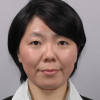Economic growth in Africa - an opportunity for EU-Japan collaboration
#CriticalThinking
Masumi Owa is a Lecturer in International Relations and International Development at Chukyo University, Japan
The global aid architecture dealing with Africa has changed over the last few decades as increasing attention, in addition to poverty reduction through means such as increased health spending and education, is focused on economic growth.
This shift could be attributed to the reduced debts owed by African countries following implementation of the World Bank’s Heavily Indebted Poor Countries initiative (HIPC) but, more importantly, to the emergence of new actors, notably China, who provide huge loans to projects aimed at boosting the African economy. Whereas Europe has been an important development partner for Africa, Japan is a relatively newcomer to the region. Nevertheless, Japan’s Official Development Assistance (ODA) to Africa is on the rise.
Japan’s ODA to Africa was about 10% of its overall ODA during the 1970s up to the mid-2000s, but from then onwards, it has increased to approximately 20% (in net terms). Historically, Japan’s aid had long been focused on Asia, as it had originated from reparations to neighbouring countries after the World War II; hence, almost all of Japan’s ODA went to the Asian region during the 1960s. When Japan became the largest Asian donor in the 1990s, it also turned to Africa and established a political forum entitled the Tokyo International Conference on African Development (TICAD), which provides an opportunity for a high-level policy dialogue on Africa’s development. In 2016, Japan’s ODA to Africa reached $1,338 million, making it the fifth largest donor in Africa after the US, the UK, Germany and France.
Economic growth is the area that has the biggest potential for collaboration between Japan and the EU
Economic growth is one important priority for Japan’s development cooperation policy. In 2015, the Japanese Ministry of Foreign Affairs published the Development Cooperation Charter in which ‘quality growth’ is set as one of three prioritised policies. It was also reflected in the 2016 TICAD-VI Nairobi Declaration.
Quality growth refers to inclusive, sustainable and resilient growth which benefits the poor and is sustainable in the long run. To support the concept, Japan’s government promotes ‘quality infrastructure’. According to the Nairobi Declaration, quality infrastructure aims to ensure economic efficiency in view of life-cycle cost, reliable operation, safety and sustainability, aligned with the development needs of African countries. It also involves job creation, transfer of expertise and know-how, as well as capacity building of African countries and people, while addressing the social and environmental impact.
Consequently, economic growth is the area that has the biggest potential for collaboration between Japan and the EU.
Both Japan and the EU share a similar sectoral allocation of ODA to Africa. In 2016, 26% of Japan’s ODA to Africa went to the economic infrastructure, 19% to the energy sector, and 17% to the social infrastructure. For the EU member states in the Development Assistance Committee (DAC) of the OECD and the European Commission, 33% went to social infrastructure and 13% to economic infrastructure. Loan aid also constitutes a high proportion of aid to Africa for both Japan (41%) and the EU (23%). Moreover, the ratio of Japan’s loan aid out of its total ODA to Africa increased over the last decade from 8.9% in 2006 to 40.9% in 2016.
In addition, Japan and the EU share a common approach in their policy towards Africa. The Declaration of the Africa-EU Summit in 2017 specifies the importance of growth, investment, infrastructure and skill, particularly for young people, whereas Japan’s TICAD VI prioritised private sector and human resource development in addition to quality infrastructure.
Africa might become a battlefield for different actors pushing their own interests
Yet, while economic growth is welcomed both by African leaders as well as donors, there are some concerns about the level of debt sustainability, as well as the quality of loan projects and aid effectiveness. All these concerns are primarily based on lessons learned in the past.
As emerging actors provide increasing support in a way that is different from the DAC donors, African governments seem to become more aware of the social and environmental impact, human rights issues as well as life-cycle cost in relation to loan projects. Given the shared interest in infrastructure development for increasing economic growth, Japan and the EU need to support African countries in a way that does not undermine effective development and we must remind ourselves not to repeat mistakes of the past. Promoting ‘quality infrastructure’ could be such a case for the collaboration between Japan and the EU.
Currently, there is a clear shift towards securing “national interest” in the world, including in the field of development cooperation. With Africa’s abundant natural resources and potential for economic growth, Africa might become a battlefield for different actors pushing their own interests. This may result in accumulating debts in African countries or undermining aid effectiveness, for instance reduced aid coordination or untied aid, unless African governments can take strong ownership in managing these different actors.
In this regard, Japan and the EU have a role to play in utilising their expertise with foresight in supporting African economic growth for the sake of the African people.
All the aid statistics in this paper are extracted from OECD stat
Stay informed
